Palabras clave:
alimentación, conversión, eficiencia, ganancia.Resumen
El orégano como extracto vegetal ha sido investigado científicamente y ha resultado ser un efectivo antibiótico, que no genera cepas resistentes como ocurre con la utilización de antibióticos promotores de crecimiento (APC), y se considera además una alternativa para mejorar el rendimiento productivo en explotaciones pecuarias. Es por esto, que se planteó como objetivo del trabajo la evaluación del uso del extracto de orégano sobre la ganancia de peso final, conversión y eficiencia alimenticia en conejos. Para tal fin se realizó un experimento completamente al azar con
12 conejos Nueva Zelanda divididos en 3 tratamientos: T1, se determinó como control y su alimentación base fue 100 g de alimento balanceado comercial (ABC); el T2, a los 100 g de ABC se le adicionó 1 ml de extracto de orégano y el tratamiento T3, 100 g de ABC más 3 ml de extracto de orégano. La investigación tuvo una duración de 60 días, 8 de los cuales fueron de adaptación a la dieta. Los datos obtenidos fueron evaluados por ANOVA y las diferencias estadísticas entre tratamientos por la prueba de Tukey con un nivel de significancia de 0,05. Existió diferencia estadística (p<0,05) para las variables ganancia de peso final y eficiencia alimenticia a favor de T1 en relación con T2 y T3; para la conversión alimenticia no se encontraron diferencias estadísticas (p>0,05) entre los tratamientos. Se concluye para esta investigación que la adición de extracto de orégano no influye sobre los parámetros productivos en conejos de engorde.
Descargas
Citas
AYALA, L., SILVANA, N., ZOCARRATO. I. & GÓMEZ, S. 2011. Use of vulgar oregano (Origanum vulgare) as phytobiotic in fatting rabbits. Cuban Journal of Agricultural Science. (45): 159.
BAMPIDIS, V. A., CHRISTODOULOU, V., FLOROU-PANERI, P., CHRISTAKI, E., CHATZOPOULOU, P. S., TSILIGIANNI, T. & SPAIS, A. B. 2005. Effect of dietary dried oregano leaves on growth performance,
carcase characteristics and serum cholesterol of female early maturing turkeys. British Poultry Science. (46): 595-601.
BARTON, M. D. 2000. Antibiotic use in animal feed and its impact on human health. Nutrition Research Reviews. (13): 279-299.
BASILICO, M. Z., & BASILICO, J. C. 1999. Inhibitory effects of some spice essential oils on Aspergillus ochraceus NRRL 3174 growth and ochratoxin: A production. Letters in Applied Microbiology. (29): 238-241.
BOTSOGLOU, N. A., FLOROU-PANER, P., CHRISTAKI, E., FLETOURIS, D.J. & SPAIS, A.B. 2002. Effect of dietary oregano essential oil on performance of chickens and on iron-induced lipid oxidation of breast, thigh and abdominal fat tissues. British Poultry Science. (43): 223-230.
BOTSOGLOU, N., FLOROU-PANERI, E., CHRISTAKI, I. & GIANNENAS, A. B. 2004. Performance of rabbits and oxidative stability of muscle tissues as affected by dietary supplementation with oregano essential oil. Archives of Animal Nutrition. 58: 209.
BUSQUET, M., CALSAMIGLIA, S., FERRET, A. & KAMEL, C. 2006. Plant Extracts Affect In Vitro Rumen Microbial Fermentation. Journal of Dairy Science. (89): 761-771.
CALSAMIGLIA, S., BUSQUET, M., CARDOZO, P. W., CASTILLEJOS, L., & FERRET, A. 2007. Invited Review: Essential Oils as Modifiers of Rumen Microbial Fermentation. Journal of Dairy Science. 90: 2580–2595.
CASTILLEJOS, L., CALSAMIGLIA, S., & FERRET, A. 2006. Effect of essential oils active compounds on rumen microbial fermentation and nutrient flow in vitro systems. Journal of Dairy Science. (89): 2649-2658.
CASTILLO, R. S., AGUILAR, R. J., LUCERO, M. F. & MARTÍNEZ, G. J. 2007. Sustitución de alimento comercial por excretas en la dieta de conejos en crecimiento. Avances en Investigación Agropecuaria.
(11): 41-48.
CASTRO, M. 2005. Uso de aditivos en la alimentación de monogástricos. Revista Cubana de Ciencia Agrícola. (39): 451-457.
CHAVES, A.V., STANFORD, K., GIBSON, L. L., MCALLISTER, T.A. & BENCHAAR C. 2008. Effects of carvacrol and cinnamaldehyde on intake, rumen fermentation, growth performance, and carcass characteristics of growing lambs. Animal Feed Science and Technology. (145): 396- 408.
CUETO WONG, M. C. & RIVAS MORALES, C. 2008. Determinación del efecto antifúngico del aceite esencial y diferentes extractos de orégano (Lippia berlandieri schauer) sobre el desarrollo de Fusarium oxysporum aislado de plantas de tomate. Tercera reunión nacional sobre orégano. Saltillo, Coah, México.
DOZAL, N. D. 2010. Técnica de análisis de aceite esencial de orégano por cromatografía de gases. Reporte de residencia profesional. Departamento de Ingenierías Química y Bioquímica. Instituto Tecnológico de Durango, México. 12-25.
FALCÃO-E-CUNHA, L., CASTROSOLLA, L., MAERTENS, L., MARUUNEK, M., PINHEIRO, V., FREIRE, J. & MOURÃO, J. L. 2007. Alternatives to antibiotic growth promoters in rabbit feeding: a review. World Rabbit Science. (15): 127-140.
GUERRA, A. C. M., GALÁN, O. J. A., MÉNDEZ, A. J. J. & MURILLO, A. E. 2008. Evaluación del efecto del extracto de orégano (Oreganum vulgare) sobre algunos parámetros productivos de cerdos destetos. Revista Tumbaga (3): 16-29.
HERNÁNDEZ, F., MADRID, J., GARCÍA, V., ORENGO, J. & MEGÍAS, M. D. 2004. Influence of Two Plant Extracts on Broilers Performance, Digestibility, and Digestive Organ Size. Poultry Science (83): 169-174.
JAMROZ, D. & KAMEL, C. 2002. Plant extracts enhance broiler performance. Journal of Animal Science. (80): 41.
JIMÉNEZ, M., BIXQUERT. & BORRÁS, R. GIL.2005. Propiedades nutricionales y digestibilidad de la carne de conejo. Revista de Nutrición Práctica. (9): 30-32.
MANOHAR, V., INGRAM, C., GRAY, J., TALPUR, N. A., ECHARD, B. W., BAGCHI, D. & PREUSS, H. G. 2001. Antifungal activities of origanum oil against Candida albicans. Molecular and Cellular Biochemistry. 228 (1-2): 111-117.
MICHIELS, J., MISSOTTEN, J.A.M., FREMAUT, D., DE SMET, S. & DIERICK, N.A. 2009. In vitro characterisation of the antimicrobial activity of selected essential oil components and binary combinations
against the pig gut flora. Animal Feed Science and Technology. (151): 111-127.
MINISTERIO DE AGRICULTURA Y DESARROLLO RURAL. 2009. Encuesta Nacional Agropecuaria; Cifras de otras especies. 116-127.
MURCIA, J. & HOYOS, I. 2003. Características y aplicaciones de las plantas. Disponible en http://www.zonaverde.net/origanumvulgare.htm. Accesado en 06/12/2013.
NIEVES, D., FARIÑAS, S., MUÑOZ, A., TORREALBA, E. & RODRÍGUEZ, N. 1996. Uso del Arachis pintoi y Pennisetum purpureum en la alimentación de conejos de engorde. Unitellez de Ciencia y Tecnología (2): 82-91.
NIEVES, D., LÓPEZ, D. & CADENA, D. 2001. Non conventional diets in fattening rabbits feeding and supplementation with Trichanthera gigantean. Revista Unellez de Ciencia y Tecnología. Volumen Especial: 60-66.
PARRADO, S., CHAMORRO, J. & SERRANO, L. 2006. Estudio preliminar: Orégano como promotor de crecimiento en lechones destetados. Revista de Medicina Veterinaria. 12: 81-87.
RINCÓN, C. 2008. La cunicultura en Colombia. Editorial granja la Gabriela, Colombia. Disponible en http://granjalagabriela.blogspot.com/2008/05/lacunicultura-en-colombia.html. Accesado en 02/08/2013.
SCHEELJE. R. 1976. Conejos para carne: sistemas de producción intensiva. ED., Acribia. España. 268 pp.
ULTEE, A., KETS, E. P. W. & SMID, E. J. 1999. Mechanisms of action carvacrol on the food-borne pathogen bacillus cereus. Applied and Environmental Microbiology. 65(10): 4606-4610.
WINDISCH, W., SCHEDLE, K., PLITZNER, C. & KROISMAYR, A. 2008. Use of phytogenic products as feed additives for swine and poultry. Journal of Animal Science. (86): E140-E148.





